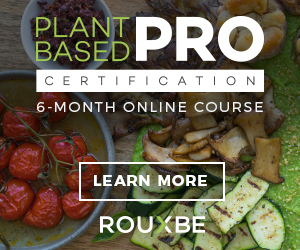Steaming vegetables
Steaming vegetables is a simple, healthy way to prepare them. It doesn't require oil or butter and retains more nutrients than other cooking methods.

How to prepare vegetables for steaming
Before you steam, wash and dry your vegetables. Then cut them into uniform pieces so they cook at the same rate. Place a steamer basket or colander on top of the pot, add water, and boil over high heat. When water boils, place vegetables in a basket (or colander). Cover tightly with a lid and reduce heat to low; cook until tender but not too soft.
For the best flavor:
Use only clean utensils when preparing food for steaming
Don't crowd the pan or allow more than one layer of food in a steamer basket or colander
How to steam vegetables
You will need a pot or pan with a lid to steam vegetables. Fill the bottom of your pot or pan with water and boil over high heat.
When your water comes to a boil, add some healthy oil (such as olive oil) and any spices or herbs you would like.
Add in your favorite vegetables and place a metal steamer insert or a steamer basket on top of them. The metal part of these devices should be resting directly on the water but not touching it. Let this sit until cooked through, which takes about 10 minutes for most vegetables but may vary depending on what you’re cooking (e.g., bell peppers take longer than green beans).
There are many ways to tell if your vegetables are done: They can be soft enough to bend easily when pressed against something flat; their appearance may change slightly, or they might even start turning brown around the edges! If not thoroughly cooked after 10 minutes have passed, then give them another 5 minutes before checking again—this process is called parboiling/blanching because it blanches (cooks only partially) foods such as broccoli before freezing them so that they keep better once thawed out later on down the road when needed again at mealtime without having lost any nutritional value while waiting between uses!
Describe tests for doneness
To test for doneness, insert a fork into the vegetable. If it meets resistance, continue cooking; if it meets no resistance, remove it from heat immediately.
Another way to tell if your vegetables are done is by shaking them in their pan. This will cause them to make noise; if they make little or no noise when you shake them around, they're done! If they make a lot of noise when you shake them around too much, keep cooking until most of that sound stops happening—but be careful not to overcook your food!
Different ways to finish steamed vegetables
As you are steaming vegetables, please take a moment to think about how you want to finish them. Here are some ideas for finishing your vegetables:
Add butter and herbs. For example, add flavored butter and fresh herbs like chives or parsley to steamed broccoli and cauliflower.
Add cheese. Parmesan cheese is always delicious on steamed broccoli, cauliflower, or brussels sprouts. You can also add other cheeses, such as feta or goat cheese if those appeal to your taste buds more than the classic parmesan flavor profile that most people prefer when they think of steamed vegetables with cheese toppings on them.
Add lemon juice, salt, and pepper. If you want even more lemony goodness in your life, this will be right up your alley! Just squeeze some lemon juice over whatever vegetable dish you're making before serving it up so that everyone gets a taste of what their lives have been missing out on until now--freshly squeezed citrus goodness with each bite! Don't forget those other two essential ingredients, though--saltiness from salt helps balance out the sweetness from sugar (or honey) which gives more depth of flavor overall. At the same time, black pepper adds crunchiness because sometimes we all need something tangible between our teeth when eating meals at home instead of slurping liquid foods off spoons directly into our mouths (not recommended).
How to store steamed vegetables for future use
Steamed vegetables can be stored in the refrigerator for up to three days and in the freezer for up to three months. To store your steamed vegetables for later use, place them in an airtight container or sealable plastic bag and store them in your refrigerator's crisper drawer or freezer (depending on what you prefer). If you're using a zipper-top bag, ensure that you press all of the air out before closing it tightly so that it will keep longer than if there were air inside.
Say goodbye to overcooked, mushy, waterlogged veggies.
Fill the steamer basket with water, boil over high heat, add vegetables, and cover.
Steam until tender but not mushy (this varies by vegetable; go by taste): about 6 to 8 minutes for asparagus spears, 4 to 5 minutes for baby carrots or green beans/sugar snap peas; 9 to 12 minutes for broccoli florets; 15 to 20 minutes for cauliflower florets or whole baby potatoes (remove from heat before they become too soft).
Test with a fork: insert into the center of the largest piece of vegetable; it should slide in easily without resistance and come out clean when removed.
Conclusion
Steaming is a great way to cook vegetables because it allows the natural flavors and nutrients to come through and doesn't add any extra fat or calories. So go ahead and try steaming some veggies tonight!
Article by Dat Milton




